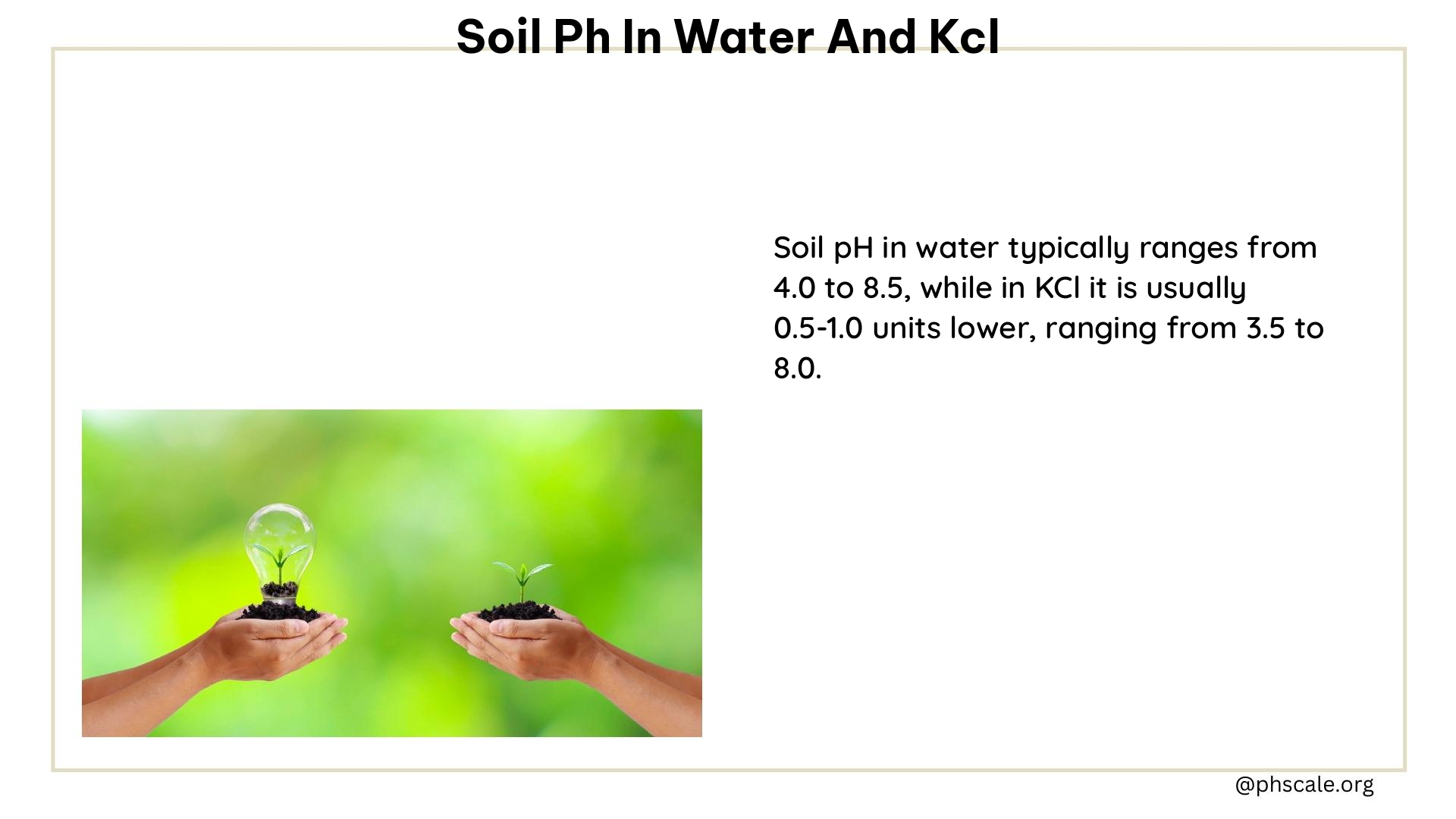Soil pH is a crucial parameter in understanding soil chemistry and fertility. Measurements of soil pH can be taken in different solutions, including water (H2O) and potassium chloride (KCl). The pH values obtained in these solutions can vary significantly, and understanding these differences is essential for accurate soil analysis and management.
Understanding Soil pH in Water (H2O)
Soil pH in water measures the acidity of the soil solution. This method is commonly used and provides a general indication of soil acidity. The pH value in water reflects the concentration of hydrogen ions (H+) in the soil solution, which can be influenced by various factors, such as the presence of organic matter, mineral composition, and microbial activity.
Soil pH in Potassium Chloride (KCl)

Soil pH in KCl measures the acidity of the soil solution, as well as the reserve acidity in the soil colloids. This method is more accurate for acidic soils, as it accounts for the exchangeable H+ and Al3+ ions. The pH in KCl is generally lower than the pH in water due to the displacement and release of protons by the electrolytic salt.
Relationship Between pH in Water and KCl
The relationship between pH in water and KCl is non-linear, with pH in KCl being lower than pH in water. The difference in pH values can be significant, with pH in KCl being 0.5-1.0 pH units lower than pH in water. This difference is more pronounced in acidic soils, where the reserve acidity in colloids is higher.
Effect of Soil Type
The relationship between pH in water and KCl can vary depending on the soil type. For example, in volcanic ash soils, the pH in KCl is strongly correlated with Al saturation. In Bulgarian soils, the relationship between pH in water and KCl can be modeled using linear regression equations, which account for 95.32% of the variation.
Conversion and Integration
Conversion equations can be used to reliably recalculate archival data of soil pH from one solution ratio to another. This integration is important for soil management, environmental monitoring, and international soil databases.
Contaminants and Chemicals
Electrolytic salts, such as KCl and CaCl2, can affect pH measurements by displacing and releasing protons and other ions. Additionally, aluminum ions (Al3+) in acidic soils can significantly impact pH measurements, particularly in KCl solutions. Soil organic matter can also influence pH values by affecting the availability of H+ ions.
DIY Methods and Home Remedies
Soil pH Measurement
- Use pH meters or pH paper to measure soil pH in water and KCl solutions.
Soil pH Adjustment
- Add lime or other alkaline substances to raise pH.
- Add organic matter to lower pH.
Soil Testing
- Regularly test soil pH to monitor changes and adjust management strategies accordingly.
References
- Kogge, K. G., Kogge, E. R., Kfuban, Y. B. P., & Raoul, L. M. G. (2018). Models relating soil pH measurements in H2O, KCl and CaCl2 for volcanic ash soils of Cameroon. ScienceDirect.
- Kabała, C., et al. (2018). Conversion of Soil pH 1:2.5 KCl and 1:2.5 H2O to 1:5 H2O: Conclusions for Soil Management, Environmental Monitoring, and International Soil Databases. Polish Journal of Environmental Studies.
- Kogge, K. G., Kogge, E. R., Kfuban, Y. B. P., & Raoul, L. M. G. (2018). Models relating soil pH measurements in H2O, KCl and CaCl2 for volcanic ash soils of Cameroon. ScienceDirect.
- ResearchGate. (2022). What’s the relation between Soil pH and soil water pH?
- Sadovski, A. N. (2019). Study on pH in water and potassium chloride for Bulgarian soils. Eurasian Journal of Soil Science.
